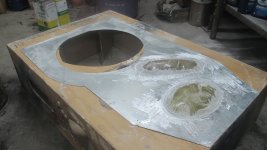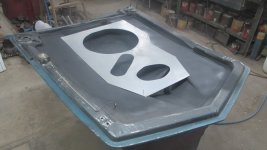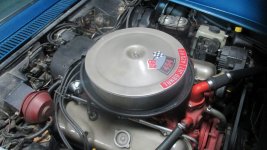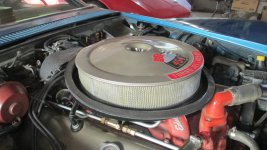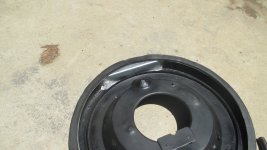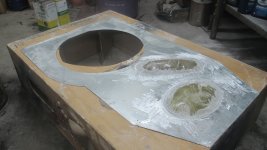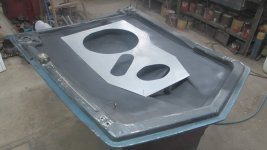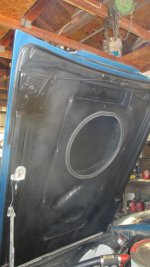toobroketoretire
Banned
This last summer I decided to convert my L-88 style hood to ram air; mostly for the cool air because ram air doesn't do much good until 100+ mph. I started by installing a 24" X 32" piece of 24 gauge galvanized steel on the underside of my hood then fabricated a shelf with a lip sticking up that extended out from my air cleaner base. It took me a whole month of tinkering to get everything to match up but in the end it came out great. The 2" X 14" air inlet is just ahead of the top of the radiator and with it's frontal location I'm getting a lot of bugs and sand and such in my air filter.
I was hoping the cold air would give me a little fuel mileage increase but to my astonishment it gave me a 33% 3-1/2 mpg increase; going from 10-1/2 to 14 mph. I wondered if I had somehow miscalculated but after running about 10 tanks of gasoline thru it and always getting the same 14 mph I knew it wasn't a mistake. When winter set in I began having choke/fast idle problems as my engine was fast idling at every stop. It appear the in-rushing air was buffeting the choke butterfly and causing it to lift the fast idle cam to it's first step. I solved that problem by modifying my choke housing to use engine vacuum to force the choke butterfly open.
I have a feeling the 1" Wc worth of pressure I am getting at 60 mph is the cause of the huge mileage increase. Maybe the in-rushing air is foaming the gasoline more and making it more combustible. So now on a 100 degree day my engine is sucking in 100 degree air instead of 200+ degree under hood air. And under a full throttle I no longer hear the "ROAR" of the 14" open air filter.
I was hoping the cold air would give me a little fuel mileage increase but to my astonishment it gave me a 33% 3-1/2 mpg increase; going from 10-1/2 to 14 mph. I wondered if I had somehow miscalculated but after running about 10 tanks of gasoline thru it and always getting the same 14 mph I knew it wasn't a mistake. When winter set in I began having choke/fast idle problems as my engine was fast idling at every stop. It appear the in-rushing air was buffeting the choke butterfly and causing it to lift the fast idle cam to it's first step. I solved that problem by modifying my choke housing to use engine vacuum to force the choke butterfly open.
I have a feeling the 1" Wc worth of pressure I am getting at 60 mph is the cause of the huge mileage increase. Maybe the in-rushing air is foaming the gasoline more and making it more combustible. So now on a 100 degree day my engine is sucking in 100 degree air instead of 200+ degree under hood air. And under a full throttle I no longer hear the "ROAR" of the 14" open air filter.

